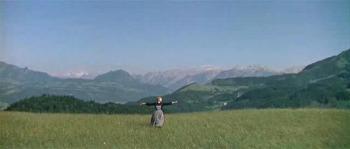Serendip is an independent site partnering with faculty at multiple colleges and universities around the world. Happy exploring!

Places of Expression
“Colored Amazons” really reminded me of was an essay I reading a while ago called “In Search of Our Mother’s Garden” by Alice Walker. I kept hearing Walker in the back of my mind, writing about the ways in which her mother created a home, a domestic space that could flourish and grow. The garden was her mothers pride and joy; it was neatly cared for and tended to every day with a passionate hand. What Alice Walker eventually comes to say is that by choosing to see only what African American women in history did not have, often we forget to see what was created in place of what did not exist. Those voids were filled in many different ways, generally through art. She talks about other forms of expression, such as song and tapestry weaving, many things that are overlooked in historical retellings. Her mother’s garden stood as means of expression as well. It represented her mothers desire to create a home that had always been denied to her. I was especially reminded of this when reading Gross, who says, “Adhering to the tenets of domesticity was not important to blacks solely as a way of contesting white racism, but on a more personal level it also affirmed them as men and women” (Gross 88). This “home-making” seemed to dominate the desires of African American women that were described in the book. Often, Gross would describe the effects of being unable to recreate a home in the traditional sense and the physically and psychologically violent effects it had on black women during that time.

Robin Hood versus Criminal
When reading “Prisoners of a Hard Life” (PHL) I felt outraged. The level of mistreatment, the utter waste, and the general lack of compassion these women faced (and still face) shocked and frustrated me. I couldn’t understand how people like Denise could be treated the way they were. I followed up the PHL reading with Colored Amazons, however, and began to feel a change of heart. As I read, I couldn’t stop thinking I was missing something or wasn’t getting the full picture. Though, like PHL, many of the stories in Colored Amazons frustrated and angered me – Alice Clifton’s story, for example – I kept feeling as though the stories were commending the actions of the prisoners, and that made me uncomfortable.

Avatar Selection
My avatar is a Hannah Hoch image, a close-up from one of her larger works. I chose it for somewhat obvious reasons, as it depicts the face of a woman with an open mouth with text, specifically the letters ABCD, between her teeth. In addition to being visually interesting and being an image from one of my favorite artists, I thought the themes of voice and collage in the piece related quite nicely to our 360.

Climb lots of mountains
The image I selected is from the Sound of Music – it’s that moment when Maria is bounding into a field, arms spread, singing, feeling completely free… right before she realizes that she’s super-late for something back at the convent and sprints off back down the hill (goddamn bell!)

Forground/Background based on this image: I chose this picture because, for me, it represents emotional highs and lows based on location. In the background, there’s the unseen convent – a place related of worry, awareness of responsibilities, commitments, etc. But in the foreground, there is a sense of freedom, carelessness, and anticipation – perhaps Maria has been planning to go for this walk, looking forward to it, much like I look forward to my sources of freedom on campus. And of course, there is the challenge of the climb, which I think is a good symbol for life at Bryn Mawr.
I’m trying to accentuate the positive right now, let that positivity foreground my vision of Bryn Mawr (and I think visiting my on-campus site, the area around Arnecliffe Art Studio, will be a space of freedom). But honestly, sometimes it feels like a convent, so many tight corners and obligations.
West Philadelphia, Born and Raised.

Charles P. Varle's "Idealized Plan for West Philadelphia"

Nathan Suplee's "Survey Map of West Philadelphia"

Monument Valley

I've been on Serendip since I've been in Jody's E-Sem and I can probably count the number of times I've changed my avatar on one hand. The current picture I have as my avatar is a candid picture of me sitting on a rock and gazing in the distance (I swear, totally not on purpose) while I was visiting Monument Valley in the Navajo Nation. I try not to pick photos where you can clearly see me, and I think I do that because I feel uncomfortable when the attention and focus is on me. The trip to Monument Valley was part of a summer program I was participating in during the summer before my senior year of high school started. I got to learn about Southwestern culture as well as the Navajo people and their interesting but often overlooked culture. That trip made such an everlasting impact on me and further helped me realize my passion for social justice and I definitely plan to go back and visit one day.
Alice Clifton and control over one's body
The story of Alice Clifton was hard for me to read. I felt myself physically squirm at both the graphic descriptions (of cutting the child’s throat) and knowing the absolute lack of control Alice Clifton had over her life and the life of her child. It is not clear whether or not she wanted to keep that baby, but it does seem the Shaffer (the father) may have persuaded her to kill the child or make it look as though she did. It seemed bizarre how little Shaffer is involved in the trial, but of course as I continued reading I learned that crimes against black woman, even as severe as rape, were not acknowledged. Gross writes “Clifton sought to escape slavery by slashing her infant’s throat and as a consequence found herself tried by a justice system that allowed for her enslavement even as it dismantled slavery for other blacks” (page 26). Even though slavery was being dismantled, had the child lived, I doubt he or she would have had a happy life given how long and slow the process was (is? we might not have slavery, but racism is alive and well...look how many schools are segregated...).
In thinking about this, I wonder how much things have changed in terms of women having control over their own bodies. My first reaction is that I feel there is no comparison to the lack of rights Alice Clifton had as a black domestic servant in the late 1700s, and that we are much better off today. But is that true? Is it ludicrous to even ask?

My Picture, My Identity

I chose to use this picture as my avatar because it's a photo I took while in New Zealand this summer visiting family. The fern is so common in native forests there that I can't help thinking of my family when I see them. I also really relate to this photo because the fern is actually hanging over a waterfall. In many ways, I feel like that's a great analogy for the risktaking we do in class and every day of our lives.

Avatar commentary
Copied from an email that I sent to Barb this morning about my avatar:
With regards to my avatar: (http://arrestedmotion.com/2011/11/releases-joe-sorren-x-ingrid-michaelson-human-again-album-cover-and-print/)
I really like this image--it is from the album cover of a recent album by Ingrid Michaelson, one of my favorite artists, so I feel connected to it in that way. Not only that, but I feel connected to the girl in the picture--she is small in comparison to her surroundings, almost swallowed up by them, looking at them and trying to understand, trying to connect with something. In my mind, these surroundings are water, and the girl in the image is merely dipping her toes in, although it is all around her. I often feel this way about academia, about issues of social justice--I have a lot of curiosity and hunger to understand everything around me, and the comments and feelings and experiences of others, but I've only just scratched the surface. I think it's important to keep this sense of not knowing, especially in a class like this where there is so much that is subjective, and in the rest of my life, because what has more ambiguity and such multitude of possible choices than that?



